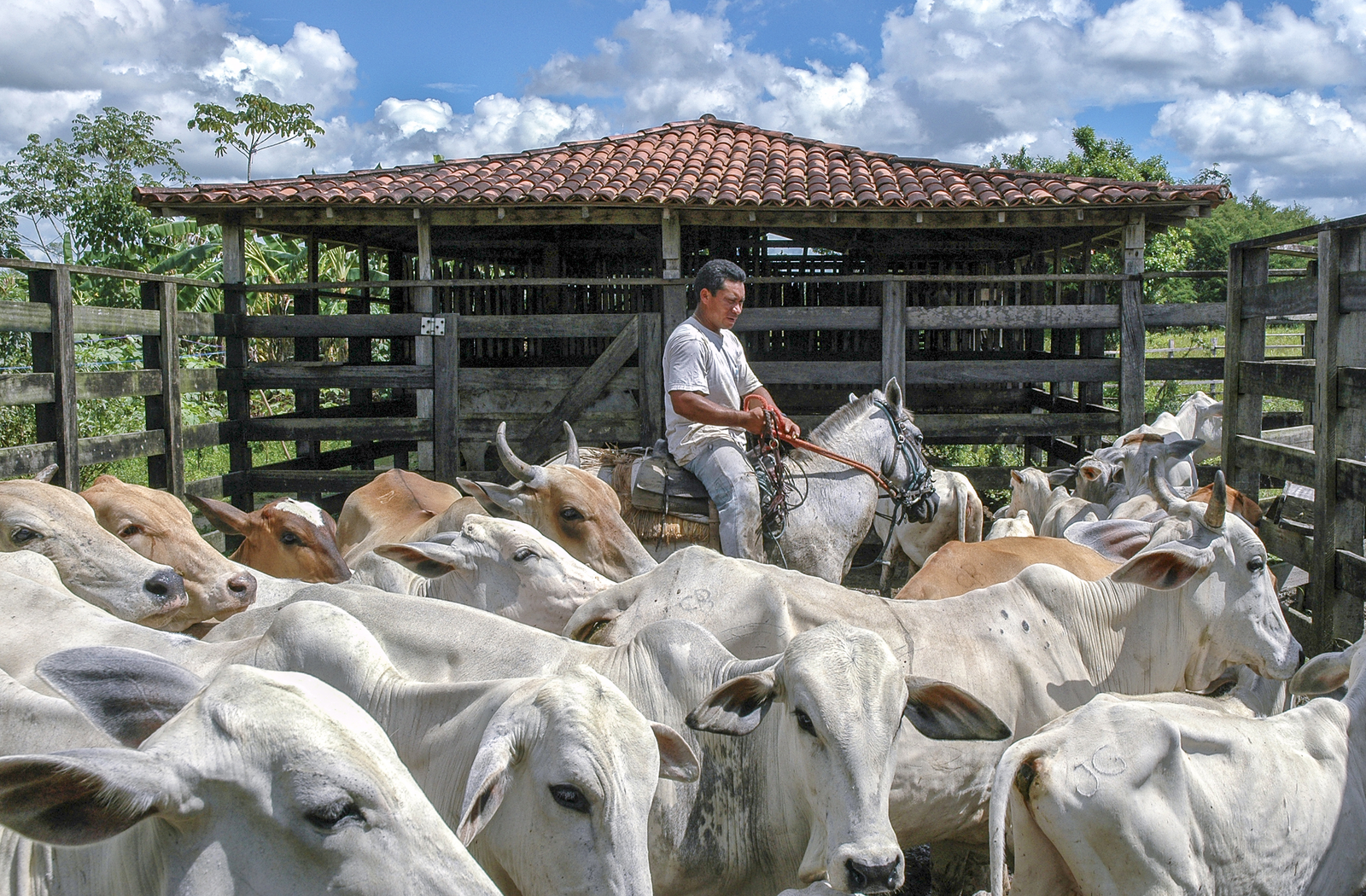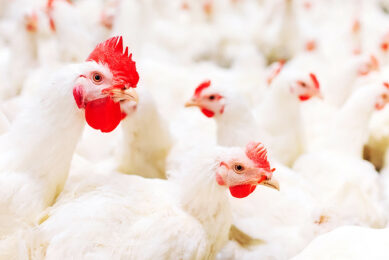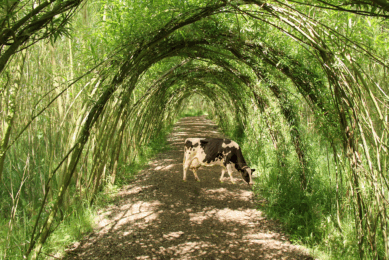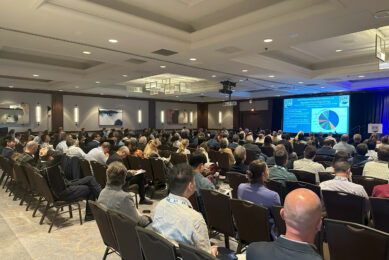Brazil: Opportunities for feed investments

Brazil is on its way to overtake the USA as the world’s largest producer of soy and is currently the second largest producer of beef. This makes this country an interesting place for agricultural ?investment.
By Phil Stone
It wasn’t supposed to be like this. When Brazil won the contest to stage the World Cup, 2014 was supposed to mark a watershed in the emergence of a new global force. Instead, the build-up to the most high-profile sporting event in the world has been marred by mass political protest, tragic loss of life in the rush to get delayed venues ready and a disappointing economic performance to match the failure to win the trophy. GDP has fallen from a peak of 7.5% in 2010 to an average level of around 2% per year since 2011. Recent years have seen a flood of overseas investment into Brazil, a trend that has been particularly noticeable in the animal feed industry, however many are beginning to question whether the huge potential of this country will be realised over the next decade. When it comes to agribusiness, there is no question that Brazil is a global superpower. It appears set to overtake the USA as the world’s largest producer of soy, it is currently the second largest producer of beef and home to several of the world’s largest meat packagers and broiler producers (JBS, Brasil Foods and Marfrig). As the world asks how it will find the resources to meet the huge surge in demand from China and other Asian economies it seems that only Brazil, with its vast tracts of arable land and huge fresh water reserves, has the answer.
Opportunities for feed investments
Given this context, there is no surprise that the leading global animal nutrition businesses have been battling to gain a foothold in this market. The list of transactions is impressive. It began as early as 1997 when Provimi invested in Nutron. At the time it was a small premix player but soon it would become a driving force which played a major role in Provimi’s eventual sale to Cargill in 2012 for €1.5bn. Others followed that same year, with Nutreco adding Bellman to the Fri-Ribe business it had invested in several years earlier; De Heus investing in Nutrifarms; and DSM’s €465m acquisition of Tortuga, the giant supplier of free-choice minerals to Brazil’s vast cattle herd. According to Carlos Roberto Silva, Director of Marketing and Sales at Tortuga, the impact has been significant. “International groups have brought technology as well as financial know-how that has accelerated the professionalisation of our industry and forced domestic competitors to respond. The benefit is clear to farmers: A more efficient feed industry means superior products at lower prices allowing them to meet growing international demand.” However since the flurry of international investment in 2012, it seems that the pace of investment has slowed in parallel with the country’s sluggish economy. Long-term growth prospects for the feed industry remain far ahead of most advanced economies, however with years of easy growth apparently behind us, investors and industry players are having to take a more nuanced view of the market as they seek opportunities to create value.

Brazil is set to overtake the US as the world’s largest soy producer
Intensification of meat production
One of the most significant opportunities lies in the intensification of beef and dairy production. Cattle farmers are being squeezed by dramatically increasing land prices and tightening environmental controls aimed at reducing deforestation. Unable to expand their farming territory, this hugely fragmented industry is being forced to consolidate and intensify production, something that can only be achieved by increased productivity. This will require either improved mineral supplementation for grazing cattle, a shift towards production in feedlots, or in many cases a hybrid solution, where ruminants can move between grazing and feedlots as part of a ‘semi-confinement’ system. Whichever approach is chosen, the feed industry is set to benefit. Adriano Marcon, Group Director for Latin America and Iberia at Cargill Premix and Nutrition, has observed this trend. “We continue to see rapid growth in ruminant feed usage as the herd becomes more productive and professional. The dairy business in particular, fostered by co-ops, is outgrowing the animal nutrition market in Brazil.”
A shift to the North
Linked to this focus on productivity and intensification, there is also a gradual, but significant, shift in beef production towards the northern and western states, where a stocking rate as low as one head per hectare has the greatest potential to increase rapidly. For feed and premix producers, reaching these remote regions is an emerging opportunity and in future the configuration of production and logistics might have to change significantly. DSM (following the acquisition of Tortuga) now has a major production facility close to the port in Pecem, in Brazil’s far-north, a remote but fast-growing region where few international players have a significant presence. Given concerns about deforestation, cattle farming close to the Amazon can be controversial. Major players in the feed industry feel that they can help to alleviate some of the pressure on precious rainforest by increasing the efficiency of meat production on current pasture area, allowing output to grow without the need for additional land. “Quite simply, better technology and products leads to increased feed absorption, improved productivity and reduced contaminants in the soil” says, Silva of DSM Tortuga. “In the north we have seen a doubling of beef production over the past decade without any increase in the overall use of land. It is an example of the feed industry working in perfect harmony with the environmental legislation.”
New second-tier of customers
Another source of growth is the dynamism of a new second-tier of pork and broiler producers. For many years it appeared that
the mid-sized meat producers were being squeezed out by the vertically-integrated global giants of meat-processing and broiler production. However it seems that a new generation of leaner, more competitive businesses is emerging.
“Independent pork producers have lost space in the market to those integrated to large packers in the past” reports Marcon of Cargill, “however, the ‘new’ independent producer is way larger and often has other business than solely swine production, which gives them the financial strength to survive a crisis and allows them to continue to invest. Similarly in broiler production the major groups are being followed by new, very well managed producers that are outgrowing the overall market and delivering excellent financial performance.” Clearly there are also significant challenges for feed and premix suppliers as they seek to capitalise on the potential presented by the market. The increasing sophistication of customers and on-going consolidation means that the industry has to constantly evolve to find new ways to add value. Further M&A activity is inevitable however identifying acquisitions that move the needle is becoming more difficult, particularly for international groups that do not yet have a foothold in this country. The need for continued innovation is as strong in Brazil as in any other feed market in the world. In the meantime efficiency, customer segmentation and price optimisation have become the buzz-words of the moment. In this World Cup year there has been no sporting glory for the home nation and there is no longer easy money to be made for the feed industry. In the race to improve productivity in meat production, feed and premix suppliers are competing more and working harder than ever to remain in the lead.
About the author: Phil Stone is a Partner at Plural Strategy Group, a consulting firm specialising in the global feed industry and food-chain. Phil is based in London and can be contacted on phil.stone@pluralstrategy.com
[Source: AllAboutFeed Vol 22 nr 6, 2014]











